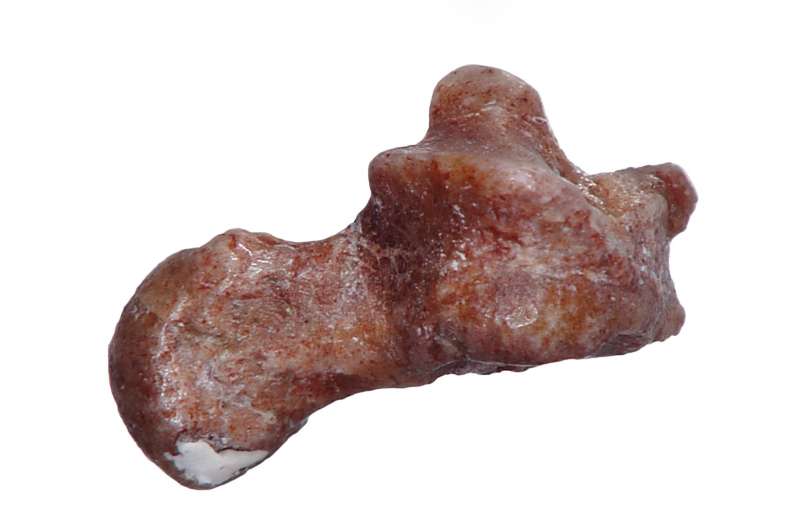Why your ancestors would have aced the long jump

A 52-million-year-old ankle fossil suggests our prehuman ancestors were high-flying acrobats.
These first primates spent most of their time in the trees rather than on the ground, but just how nimble they were as they moved around in the treetops has been a topic of dispute.
For years, scientists thought the ancestors of today's humans, monkeys, lemurs and apes were relatively slow and deliberate animals, using their grasping hands and feet to creep along small twigs and branches to stalk insects or find flowers and fruits.
But a fossil study published in the October 2017 issue of the Journal of Human Evolution suggests the first primates were masters at leaping through the trees.
Paleontologists working in a quarry in southeastern France uncovered the quarter-inch-long bone, the lower part of the ankle joint.
The fossil matched up best with a chipmunk-sized creature called Donrussellia provincialis.
Previously only known from jaws and teeth, Donrussellia is thought be one of the earliest members of the primate family tree, on the branch leading to lemurs, lorises and bush babies.
Duke University assistant professor Doug Boyer and colleagues studied scans of Donrussellia's ankle and compared it to other animals, using computer algorithms to analyze the 3-D digital shape of each tiny bone.
They were surprised to find that Donrussellia's ankle was not like those of other primates, but was more similar to those of treeshrews and other nonprimate species.
The team's analyses also suggest the animal didn't just clamber or scurry along small branches. Instead, it may have been able to bound between trunks and branches, using its grasping feet to stick the landing.
The researchers say that—contrary to what many scientists thought—the first primates may have evolved their acrobatic leaping skills first, while anatomical changes that allowed them to cling to slender branch tips and creep from tree to tree came later.
"Being able to jump from one tree to another might have been important, especially if there were ground predators around waiting to snag them," Boyer said.
More information: Doug M. Boyer et al, Postcrania of the most primitive euprimate and implications for primate origins, Journal of Human Evolution (2017). DOI: 10.1016/j.jhevol.2017.07.005
Journal information: Journal of Human Evolution
Provided by Duke University




















